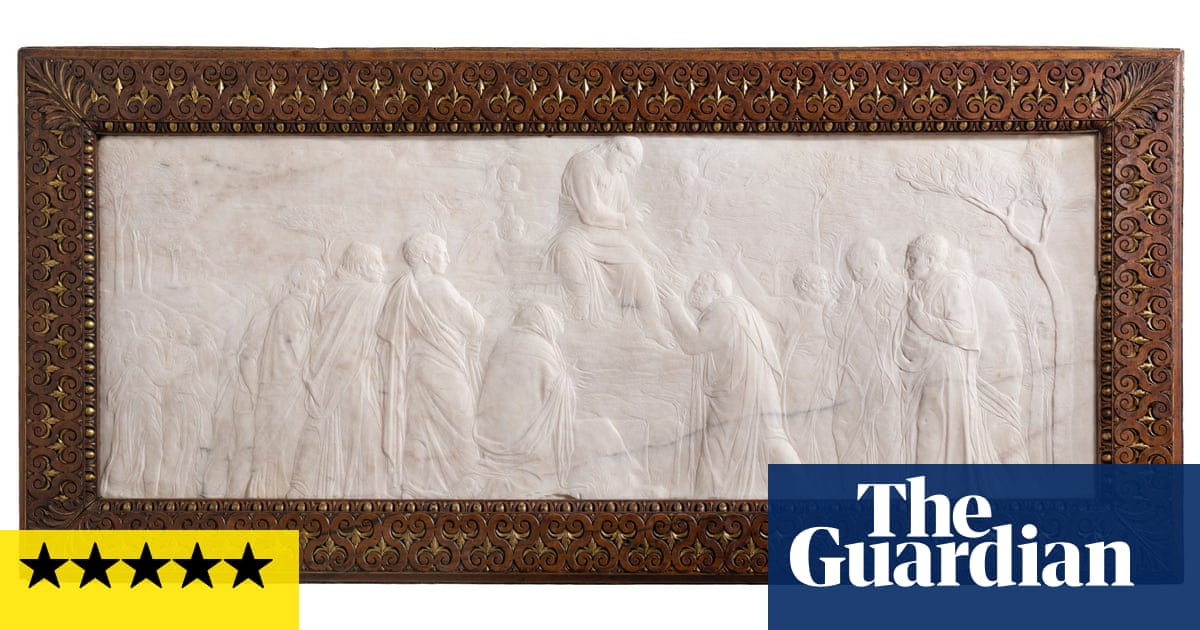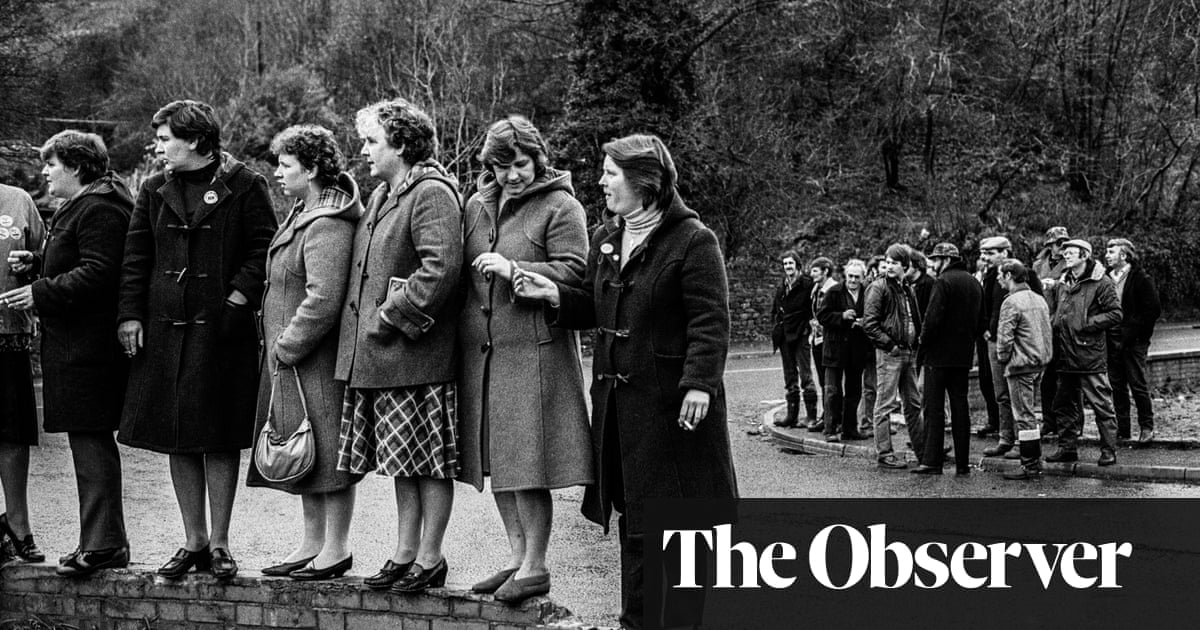
Agod with his trousers down dances maniacally. This bronze statue, known as Attis-Amorino, is blinded by ecstasy, his willy hanging out, waving his hands in the air as he raves. He’s got a poppy flower in his hair and poppy seedpods on his belt. These, the catalogue reassures us, symbolise the family for which the Florentine Renaissance sculptor Donatello made this in about 1435 to 1440. But opium has been extracted from poppies since early times and the seeds represented unconsciousness for ancient Greek and Romans. Clearly, this little deity is off his head on something.
This is one of the most confounding sculptures ever created. Many may walk past it quickly, preferring to look – and be seen looking – at the Madonnas that fill much of this exhibition. For Attis-Amorino is, as we say nowadays, problematic. Go behind it and you will see shiny buttocks peeping out of those falling trousers. Yet if we are anxious about such a work of art, that is because it’s still doing its job after more than 580 years.
Donatello is the Robert Mapplethorpe of the Renaissance, an artist of profound beauty who can create colossal unease. For his contemporaries, Attis-Amorino was transgressive not so much sexually as theologically. What manner of God is this? He has nothing in common with the suffering Christ whose image Donatello dwells on so intensely in other works here. He is not a God of suffering but excess. And maybe the road of excess leads to the palace of wisdom.
This is the first great image of classical mythology that any Renaissance artist created. When we think “Renaissance”, we tend to picture Botticelli’s Birth of Venus or Titian’s Bacchus and Ariadne. But decades before, there was Attis-Amorino. And it was made in a deeply Christian medieval world.
The exhibition starts with a captivating panoramic painting of Florence, the city state where Donatello was born in about 1386 and where he would become a favourite of the banker and political boss Cosimo de’ Medici. The city straddling the river Arno is dominated by the terracotta dome of its cathedral, built by Donatello’s friend Brunelleschi. Is that geometric egg a symbol of Christ, or of human ingenuity? This paradox hangs in the sky over Florence. In a pious age, the Renaissance city raised hymns to classical beauty inspired by the pagan Greeks and Romans.
One such image literally strains to escape its medieval clothing. It is Donatello’s David – not the famous nude he created in bronze, but an earlier work he carved from marble in about 1408 to 1409. And it is another crazy hybrid. The tall youth looms over you, wearing a tight-sleeved leather top, cloak and robes. Far from hiding the hero’s body his garments attract your eyes to the way it curves in space, the left arm bent in a flamboyant triangle, the face calmly triumphant under a victor’s wreath straight out of antiquity. This is a statue poised between two worlds: its non-linear pose typical of the medieval Gothic style; its classical face that of a Caesar. From under the stone clothes one bare leg emerges, a naked foot nuzzling the hair of Goliath’s severed head. Look inside the drapery and you can see the other naked leg, too. Donatello’s naughtiness is peeking out.
If he is a wicked artist he is also a funny one. He has an irrepressible joy in life, after all this time. Two marble reliefs bubble with energy as a crowd of winged boys dance and laugh, at once wild and elegant, their crazy cavortings bursting out of the closed spaces they inhabit. Donatello has fun with the rules of classical art. He frames the little dancers between straight ranks of fluted pilasters. Yet this rigid architecture is a device to make their jumping and grinning all the more unruly.
Donatello lives in ways his textbook contemporaries no longer do. Traditionally, the story of the Florentine Renaissance was told as a progressive sequence of discoveries, in which Donatello and his generation competed. Yet you get the impression that inventions like perspective were just tools to Donatello. He doesn’t make art for a job. He makes it to express his ideas and emotions. Had any artist ever done that before in the history of the world? Donatello’s portrait of a Florentine patrician, maybe called Niccolò da Uzzano, takes another ancient Roman genre, the lifelike bust, and unmans it, caressing this sensitive head in terracotta.
He does the same with the body of Christ. His lifesize bronze statue of Christ on the cross, which has been in the Basilica of Saint Anthony in Padua since he created it in the 1440s, is one of his greatest male nudes. The exquisitely real detail of the dying man’s ribs and stomach muscles anticipate the almost-breathing torso of Michelangelo’s David.
Everywhere you look, Donatello breaks rules to suggest fleeting, delicate, often dangerous emotions. In one of the most sublime sculptures here, he pushes at the edge of visibility itself. The Ascension depicts the disciples witnessing Christ’s elevation to heaven but the imagery of this white marble relief seems to melt into a cloud of unknowing, so soft is the carving: as you look at it you actually seem to pass from the physical realm to another reality.
Donatello can rub your face in carnal existence and transport your soul to heaven. He is one of the great paradoxical provocateurs of all time, and this exhibition lets you meet him. It’s like catching quicksilver.
Donatello: Sculpting the Renaissance is at the V&A from 11 February until 11 June 2023.












